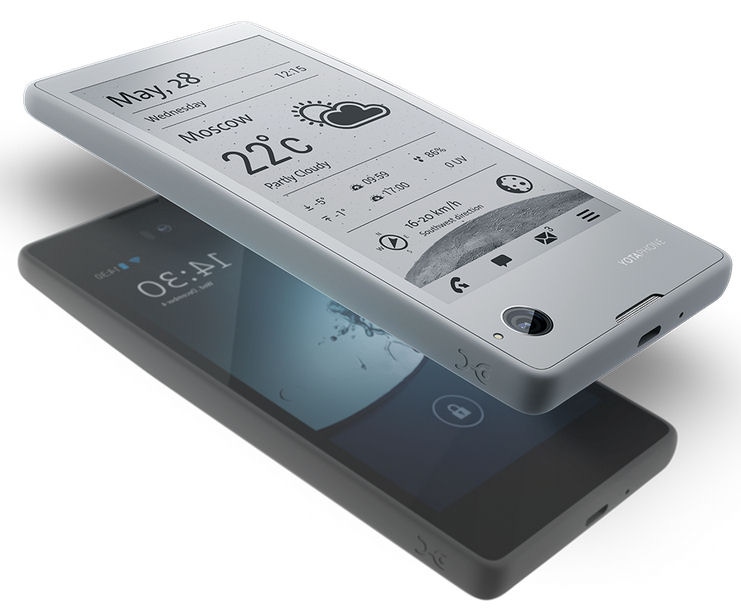Russian outfit Yota Devices has launched the second version of its dual-screen smartphone, while Finnish startup Circular Devices has served up a modular smartphone. Both devices have some strong differentiators but are unlikely to progress beyond niche status.
December 4, 2014

Russian outfit Yota Devices has launched the second version of its dual-screen smartphone, while Finnish startup Circular Devices has served up a modular smartphone. Both devices have some strong differentiators but are unlikely to progress beyond niche status.
Yota launched the first YotaPhone a year ago, betting that two screen will be considered better than one. The Android-based YotaPhone 2 has a regular backlit AMOLED screen but also has an e-ink one embedded in the back. The reason we’re supposed to want this is that the e-ink display is ‘always on’, meaning an end to the hassle of having to wake up your phone before you can interact with it.
This is, of course, a seriously first-world problem, and it’s far from clear how compelling a differentiator this second screen will be. Apart from the convenience, Yota is promoting this second screen as a batter saver, as e-ink consumes a lot less power than a regular screen. This second version of the phone offers full touch interaction with the e-ink display, which it seems the first one didn’t have.
Novel though it is, the YotaPhone 2 faces many challenges before it can be considered a success. The main one is the price, which is £555 according to the website. That’s a fairly significant chunk of change, especially when you consider the iPhone 6 starts at £539, and while Yota has even gone to the trouble of opening a special shop in London, it’s at the opposite end of the brand recognition spectrum to Apple.
“Anyone concerned this phone is too gimmicky could well be right, but one in five (19%) Brits say they are most concerned with battery life when picking a new smartphone,” said Rob Kerr, analyst at price comparison site uSwitch. “Given this handset’s features are heavily geared towards conserving power, YotaPhone could be onto a winner. However, it’s priced even higher than the iPhone 6, SIM free, and without the brand loyalty of Apple, the cost could put people off trying something new.”
Meanwhile the Puzzlephone seems to draw its inspiration from Google’s abortive Project Ara, which aimed to explore the prospect of making smartphones with modular, replaceable components, thus allowing you to incrementally upgrade or repair a smartphone without having to buy a whole new one.

The Puzzlephone seems to be a simpler, and thus possibly more realistic, version, with just three modules: the main screen and body, the battery, and the main electronics. The website is going big on how environmentally friendly this concept is and, while laudable, that too is unlikely to be a strong enough differentiator to overcome the obscurity of the brand.
Both of these phones have been in development for some time. The YotaPhone has just gone on sale, while Circular Devices just says it’s working hard to ship the first products in 2015. While it’s unlikely either of these devices will sell in large quantities, it’s good for the smartphone industry that startups still feel inclined to try something new.
About the Author(s)
You May Also Like








.png?width=300&auto=webp&quality=80&disable=upscale)


_1.jpg?width=300&auto=webp&quality=80&disable=upscale)


.png?width=800&auto=webp&quality=80&disable=upscale)